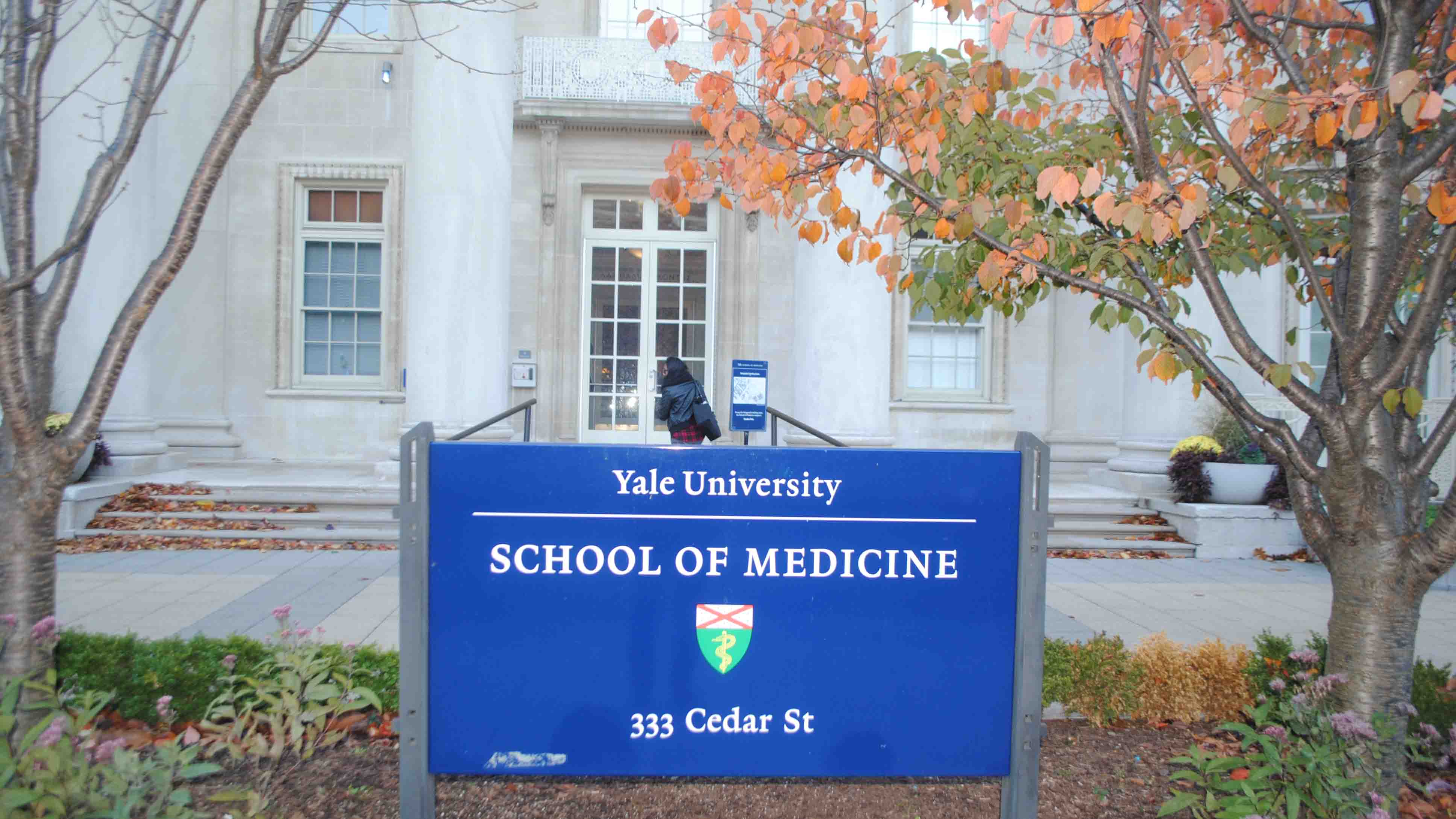
Just before noon on March 17, a throng of medical students gathered outside the Yale School of Medicine’s Harkness Ballroom. The crowd’s nervous excitement was palpable, and just beyond the room’s double doors lay sealed envelopes that would dictate where each student would spend the next three to seven years.
An annual tradition celebrated at medical schools across the country, Match Day is the culmination of a multiyear-long process that places students in residency programs, where they will continue their training to become doctors. At Yale, students opened their envelopes in the company of family, friends and academic advisors, during an intimate moment followed by a reception hosted by the medical school.
This year, 86 students matched to residency programs around the country. Seventeen students matched to programs in internal medicine, the most popular specialty this year. Massachusetts was the most popular destination, with 24 graduates headed to residencies in Boston. Twenty-three students will remain in Connecticut, with the majority of these set to complete their residencies at Yale New Haven Hospital.
Residency matches are generally made through a nonprofit organization known as the National Resident Matching Program. The NRMP uses a computerized algorithm to create the best possible match for every student, based on ranked lists provided by applicants and residency program directors.
According to Associate Dean for Student Affairs Nancy Angoff SPH ’81 MED ’90, there is a notable increase this year in students joining residency programs at the University of Washington, as well as students pursuing ophthalmology.
However, Angoff said these numbers are not representative of any trends, adding that the most common specialties and destinations vary every year, depending on students’ personal needs and career goals.
Angoff and students interviewed noted the flexibility afforded students by the Yale System of Medical Education when it comes to deciding on a specialty.
“Yale is a smorgasbord — you get a taste of everything and then you get to go back and decide what you want more of,” said Angoff, who has overseen the match process at Yale for 18 years.
Students interviewed cited a variety of factors that they took into consideration when ranking their top programs, with many pointing to the interview process as an informative factor in their final decisions.
“It’s kind of scary — if you think about it, you’re making a major life decision based on three-quarters of a day of interacting with a very small subset of people,” said Priscilla Wang MED ’17, who will be a primary care resident at Brigham and Women’s Hospital. “The burnt-out, unhappy resident isn’t going to be the one attending happy hour or speaking on a panel. I was worried about not getting the full picture, and I tried to speak to Yale alumni and friends to get more of an unadulterated look at programs.”
Other students also took their family situations into consideration. Melissa Taylor-Giorlando MED ’17, who recently had a baby, said that she was thrilled to match with YNHH’s OB/GYN program, citing Yale’s strength in basic science and her family’s preference to stay local.
Melissa Herrin MED ’17 said she has wanted to be a cardiac surgeon since high school but delayed going to medical school so she could raise her son. In ranking her preferences, Herrin noted that it was important to not only secure a good program, but also find a place that could be conducive to raising a family and providing job opportunities for her husband, who is a pediatrician.
“For us as a family, the hardest part is not knowing how to even envision your life,” said Herrin, who matched with her first choice in the University of Washington’s thoracic surgery program. “I think we’re all used to some uncertainty and stressful situations, but the anticipation of just waiting for the answer is the harder part.”
During the match, Lauren Provini ’12 MED ’17 and Nate Robinson MED ’17 were confronted with a unique challenge. They officially entered the match as a couple but faced the possibility of matching with programs in different cities.
Provini and Robinson both described the match process as stressful, but they ultimately obtained their first-choice programs in pediatrics and internal medicine in Philadelphia.
“A lot of people think it’s a really weird, crazy system that you find out and you don’t have a choice,” Robinson said. “But we’re really lucky to have this built-in mechanism where you can be together. I don’t know any other industry where that exists for a couple.”
Students who do not match with a program can participate in the Supplemental Offer and Acceptance Program. According to Angoff, the SOAP process generally works well for Yale students, allowing unmatched applicants to find a suitable alternative.
Angoff declined to comment on the number of Yale students who participated in SOAP, citing student privacy. However, she noted that in the past 10 years, there were only three years in which Yale experienced a 100 percent match rate. Angoff added that “not matching isn’t always a bad thing,” because it gives students more time to consider their future career choices.
The National Resident Matching Program was established in 1952.







